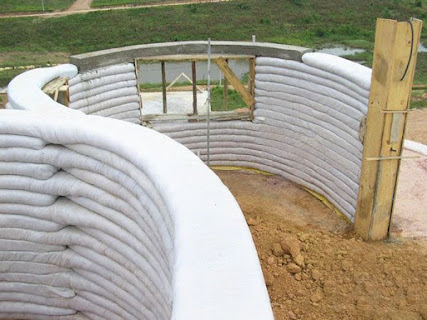Martian colonists, when they arrive, will start to use their carefully-packed provisions. This includes food, water, engineering tools, instruments, computing power and clothing. The shipments from earth will contain human crew, equipment and food shipments - although this will start to wind down as the colony takes hold and drives itself forward.
The shipment of textiles: clothing, soft furnishings and habitat materials to Mars will be a much lower priority relative to equipment and food shipments to sustain life on Mars. However, there will be a critical need for high-technology textiles for the Martian habitat - both for critical habitat elements - like those seen in the Ridley Scott Alien universe, and SEGA's 2014 survival horror game of the same name.
This isn't to say that the whole habitat will take on the padded-asylum feel of the Nostromo but there will be a call for lightweight structural elements. This can help with construction, whether as sandbags to hold together regolith in bulk. Bear in mind that such elements are also present right now on the ISS as part of personnel protection- preventing many stubbed heads and body parts.
This would significantly reduce the mass of material to bring to Mars. And it makes use of the ample earth around the landing zone. However, because of the strong radiation and extreme temperature range on Mars, any structural habitat in such construction would also need to be back-filled with many metres of soil on top. This is the same reasoning that supports discussions of underground cities on Mars.
On the inside of the colonial habitat, this can also extend to architectural elements such as undulating ceiling fabric. This will go a long way to breaking up menacing straight lines and raw metal interiors which could weigh on the minds of colonists. These interiors will be both the ark - saving them from guaranteed destruction, but also in a way, a prison - keeping them from certain danger in the cold irradiated wastes of Mars. Some middle way will help support their day-to-day wellbeing as they go about their business in their new home.
Made on Mars
As a result, the colonists will need to manufacture their own clothing. In reality, there will be some market for refurbished modular clothing, clothing that can be printed, manufactured entirely by machines from synthetic fibres. Synthetic fibres include nylon, polyester and elastane.
Most of the structure of these fibres is comprised of hydrocarbon backbone, with amide/ ester linkages.
Remember - once the power plant, propellant and oxygen plants have been produced, and when food production starts to optimise and exceed demand, there will be more than enough raw material to produce inputs for a synthetic fibre production and textile manufacturing machinery.
As a result, the colonists need only feed their methane stream from the propellant plant and reform it over a catalyst to produce ethene which can be transformed further. A few steps later and the crew have their inputs for nylon production.
An alternative route would be to recover materials from recycling - using modified bacteria to process waste into refined raw materials.
These materials can be fed into the production equipment to generate fibres and ultimately textiles. By 2024/6 - the first cycle of rotation with new crew arriving to relieve the original Martian colonial heroes. By this time, there will have been ample development in the manufacture of compact 3D printing equipment which can print clothing and textiles.
This offers the opportunity for signed merchandise produced on Mars - which can be brought home with each shift rotation back to Earth. These memorabilia would have significant value for the multitudes of space-nerds and enthusiast explorers to add to their collections.
Self-Repairing Habitat Materials
There has already been work conduced by NASA to investigate Fungi as a potential structural component of Martian habitats. In the landmark work, NASA prepared replica samples of the Regolith on Mars (no mission has yet returned soil samples back to Earth). This is not a textile however it does show the potential for mycelium impregnated textiles which can be 'trained' to give self repairing elements in the habitat.
Video from NASA about the Mycellium Mushroom used for structural elements in the habitat. Credit: NASA
You can reach me on Twitter: @Ronnie_Writes




Comments
Post a Comment